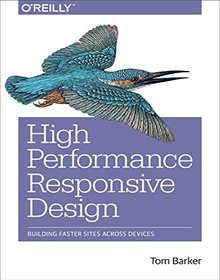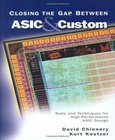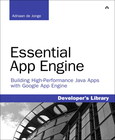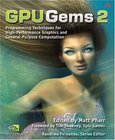High Performance Responsive Design

Book Details:
| Publisher: | O'Reilly Media |
| Series: | OReilly , Performance |
| Author: | Tom Baker |
| Edition: | 1 |
| ISBN-10: | 1491949988 |
| ISBN-13: | 9781491949986 |
| Pages: | 176 |
| Published: | Dec 12 2014 |
| Posted: | May 10 2017 |
| Language: | English |
| Book format: | |
| Book size: | 14.29 MB |
Book Description:
Yes, you can use responsive web design to create high performance, compelling websites. With this practical book, author Tom Barker demonstrates that responsive design is not just a frontend-only approach, but also a philosophy for taking advantage of the entire web stack. Responsive design patterns and anti-patterns, derived from heavily used real-world sites, are guiding principles throughout the book.Ideal for frontend-focused web developers, this book shows you how to incorporate responsiveness and performance into your project plan, use Node.js for device-specific functionality on the backend, and write automated tests for a continuous integration environment. You';ll explore many useful tools and responsive frameworks, and gain useful insights from Barker';s own experience with responsive design along the way.Get a primer on web performance concepts, web runtime performance, and performance tracking toolsWrite functionality with Node.js that serves up a device-specific experience to the clientExplore client-side solutions, such as lazy loading entire sections of a page-including images, styling, and contentValidate service level agreements (SLAs) by writing automated tests with PhantomJSExamine several responsive frameworks, including the author';s server-side framework, Ripple
Download Link:
Related Books:
Closing the Gap Between ASIC & Custom
Tools and Techniques for High-Performance ASIC Design
This book carefully details design tools and techniques for high-performance ASIC design. Using these techniques, the performance of ASIC designs can be improved by two to three times. Important topics include: Improving performance through microarchitecture; Timing-driven floorplanning; Controlling and exploiting clock skew; High performance latch-based design in an ASIC methodology; Automatically identifying and synthesizing complex logic gates; Automated cell sizing to increase performance and reduce power; Controlling process variation.These techniques are illustrated by designs running two to three times the speed of typical ASICs in the same process generation....
Essential App Engine
Building High-Performance Java Apps with Google App Engine
In Essential App Engine, Adriaan de Jonge shows Java developers how to rapidly build complex, productionquality, performance-driven cloud applications with Google App Engine. Using a start-to-finish case study and extensive Java example code, De Jonge covers the entire lifecycle, from application design and data modeling through security, testing, and deployment. De Jonge introduces breakthrough techniques for creating applications that respond within two seconds, even on cold startup, and allow server responses in hundreds of milliseconds or less throughout the rest of the session. He also demonstrates how to avoid common mistakes that can dramatically reduce cloud application performance and scalability. He thoroughly covers state-of-the-art user...
GPU Gems 2
Programming Techniques for High-Performance Graphics and General-Purpose Computation
One of the biggest developments in computer hardware in the last few yearshas been the introduction of a new generation of Graphics Processing Units(GPUs) with more power and flexibility than the CPU. Not only have GPUsrevolutionized graphics programming, now developers are starting
to use themwherever substantial processing power is required, for instance in financial andmedical applications. This use of GPUs for more general purposes is referredto as General Purpose computation on GPUs(GPGPU).GPU Gems 2 continues the format of the first edition, with forty six chaptersthat detail cutting-edge programming techniques from some of the world's topexperts. It goes beyond the first volume, however, in presenting in book formfor the first time methods fo...
2007 - 2021 © eBooks-IT.org



